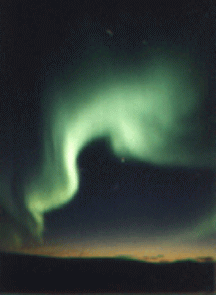Photo courtesy of Jyrki Manninen
The Ionosphere
Scientists call the ionosphere an extension or a part of
the thermosphere. So technically, the ionosphere is not another atmospheric layer, but a region of the atmosphere. The ionosphere represents less than 0.1% of the total mass of the Earth's atmosphere. Even so, it is extremely important!
The upper atmosphere is ionized by solar radiation. Under normal conditions free electrons and ions tend to recombine and a balance is established between electron and ion production and loss.
Ionization processes release energy which heat up the upper atmosphere. So temperature increases with height in the ionosphere region to the extent that by 150-200km, the Earth's atmosphere is extremely hot compared to surface temperatures.
Different regions of the ionosphere make long distance radio communication possible by reflecting the radio waves back to Earth. It is also home to auroras and the mega-ampere currents that heat the atmosphere at high latitudes during geomagnetically active times. During storms, depletions and enhancements of ionization occur depending on the local time and geographical location.
Aeronomy is a term of recent origin which is applied to the processes, both physical and chemical, of the ionosphere.
You might also be interested in:

The thermosphere is a layer of Earth's atmosphere. The thermosphere is directly above the mesosphere and below the exosphere. It extends from about 90 km (56 miles) to between 500 and 1,000 km (311 to
...more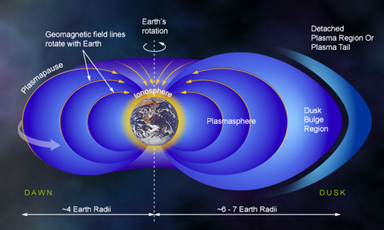
The plasmasphere is a torus-shaped region within the Earth's magnetosphere. The Earth's plasmasphere is made of just that - plasma. It has a very sharp edge called the plasmapause at equatorial distances
...more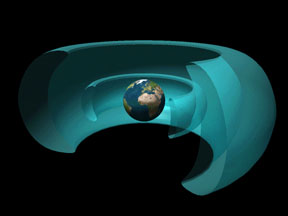
The Earth's radiation belts are one component of the larger and more complex system called the magnetosphere. The radiation belts of the Earth are made up of energetic, electrically charged particles or
...more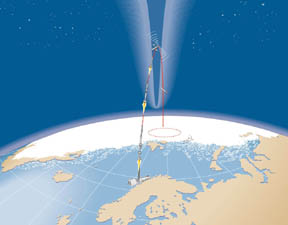
After waiting weeks for the right solar and atmospheric conditions, scientists were finally able to launch the Cleft Acceleration Plasma Experimental Rocket (CAPER) from Andoya Rocket Range in Norway.
...more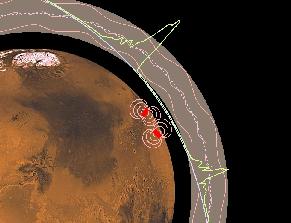
The Martian ionosphere is a layer of gas composed of ions and electrons that extends from about 75 miles up to several hundred miles up above the surface. The layer is shown schematically by the shaded
...more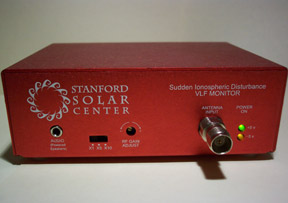
Interested in doing a project related to space weather for a science fair? The Stanford SOLAR Center provides information about space weather monitors that you can build yourself, including the Sudden
...more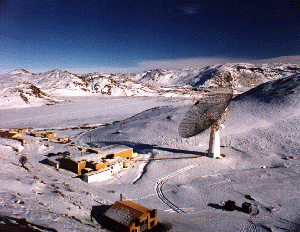
Some observations of space weather phenomena are made by spacecraft. Other observations are made from the ground on or near the surface of Earth. Spacecraft have certain advantages, such as being able
...more
